The 9.1 mile Foothill Gold Line Extension is 81 percent complete and receiving its final touches this year. After its four stations are done (Glendora, San Dimas, La Verne, Pomona), the overhead and underground wires are all put in, the crossing gates are installed, and the parking lots finished, the rail line will be turned over to Los Angeles Metro for track testing and driver training. Beyond that, Metro is awaiting response to a hopeful funding request through S.B. 125 to extend the route to Montclair.
The Gold Line was recently renamed the A Line. From Long Beach to Azusa, the 49.5-mile A Line is currently the longest light rail in the U.S. The new 9.1-mile extension to Pomona will bring the total to 58.6 miles.
The Stations
Here is a look at station construction, from West to East. Though some are more complete than others, stations are overall 65 percent complete according to the Construction Authority.
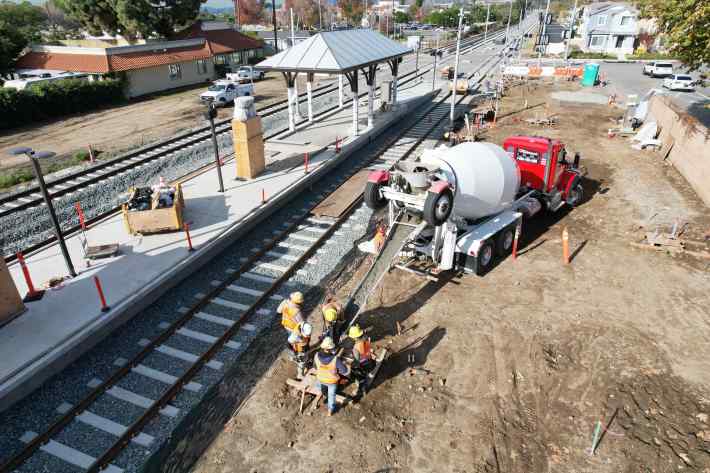
Glendora is one of the stations that’s further along. Its decorative roofing and canopies are done, as well as lighting, and the plaza area north of the platform is being built. After that will come a group of tiled art columns by artist Michael Hillman. South of the platform, the parking lot is in progress, as is a path to the platform’s pedestrian undercrossing.
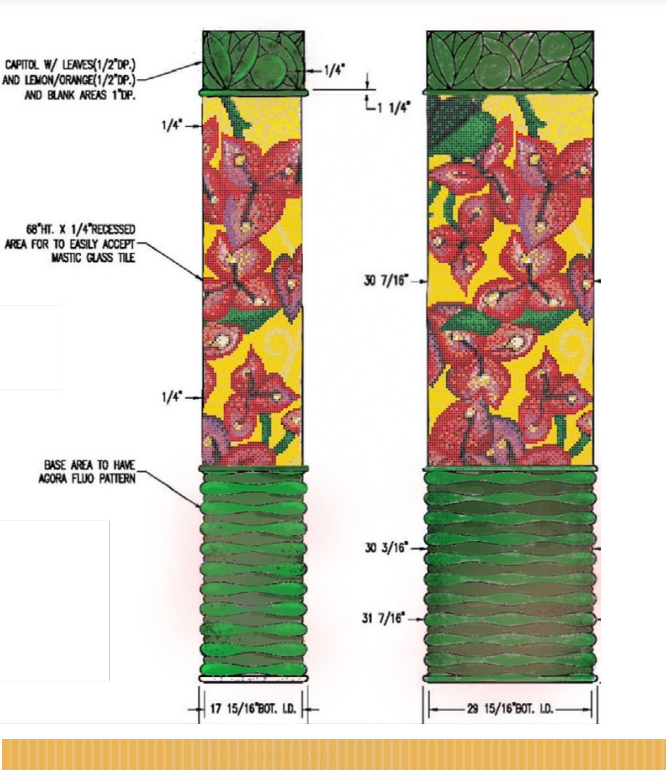
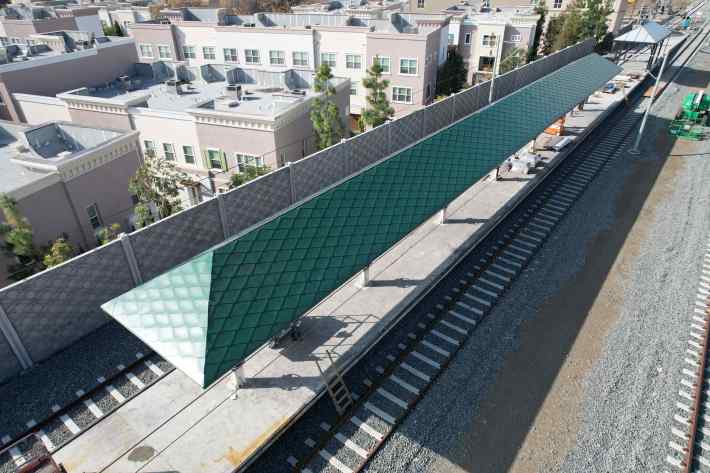
Moving on, San Dimas Station looks pretty station-like too. Workers have been carefully affixing decorative, diamond-shaped shingles to the awning over the platform.
The platform’s art pieces are coming along too. Artists Eugene Daub and Anne Olsen Daub got the gig from the city of San Dimas, and they’re busy creating eight-foot-tall, bronze walking sticks that harken to the area’s much-hiked canyons, creeks, and hills.
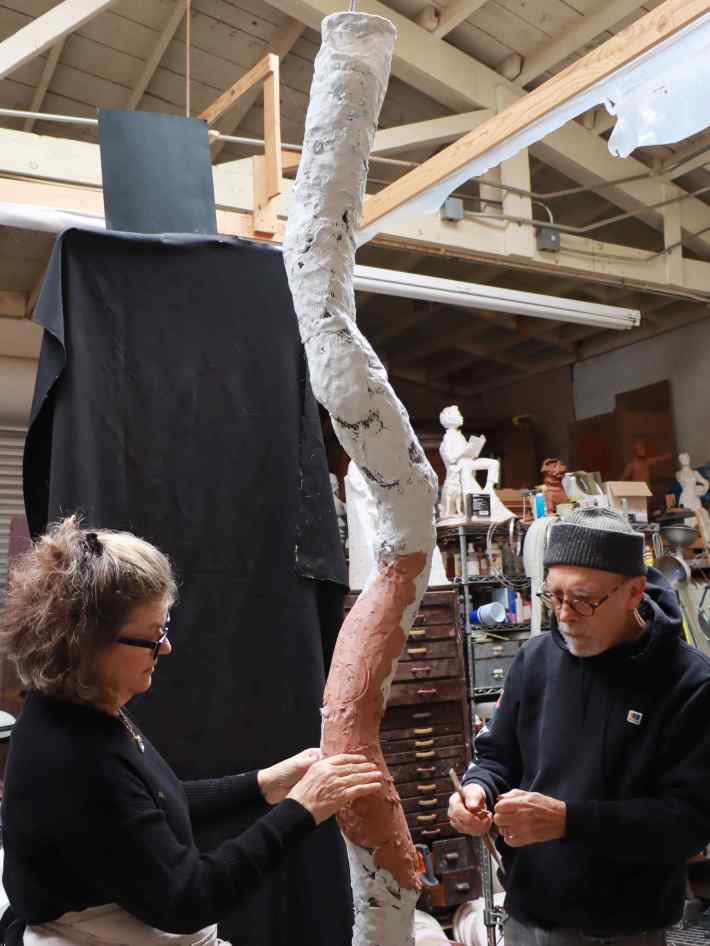
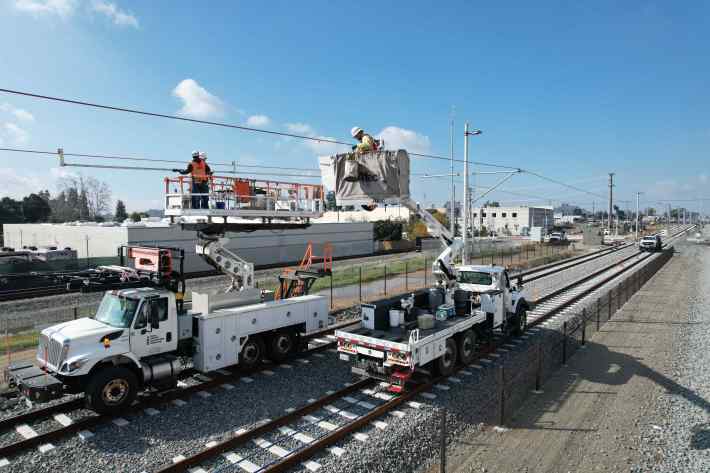
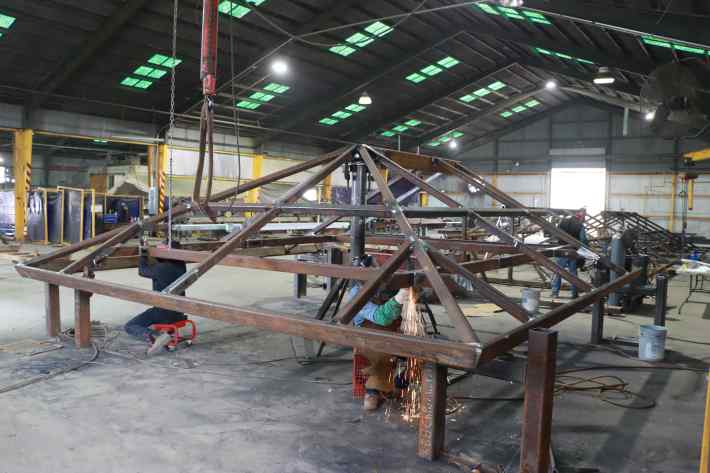
La Verne is a little bit behind its westerly counterparts. The canopies haven’t been installed just yet, fabrication on those is wrapping up. In the meantime, the overhead catenary system (the electric wires the trains get their power from) are being set up around the station platform. The parking lot is still being constructed and underground utility work continues. As for artwork, artist Blue McRight is currently putting together a set of three eight-foot-tall sculptures depicting La Verne’s agricultural history, focusing on water.



Pomona has the furthest to go, cosmetically speaking. The platform is pretty empty. Catenary wires are still being installed, and the parking area is in the process of being rebuilt from when this site was just a Metrolink station. The art pieces for this station, Pomona Station’s Hall of Gratitude, have already been completed, though not yet installed.
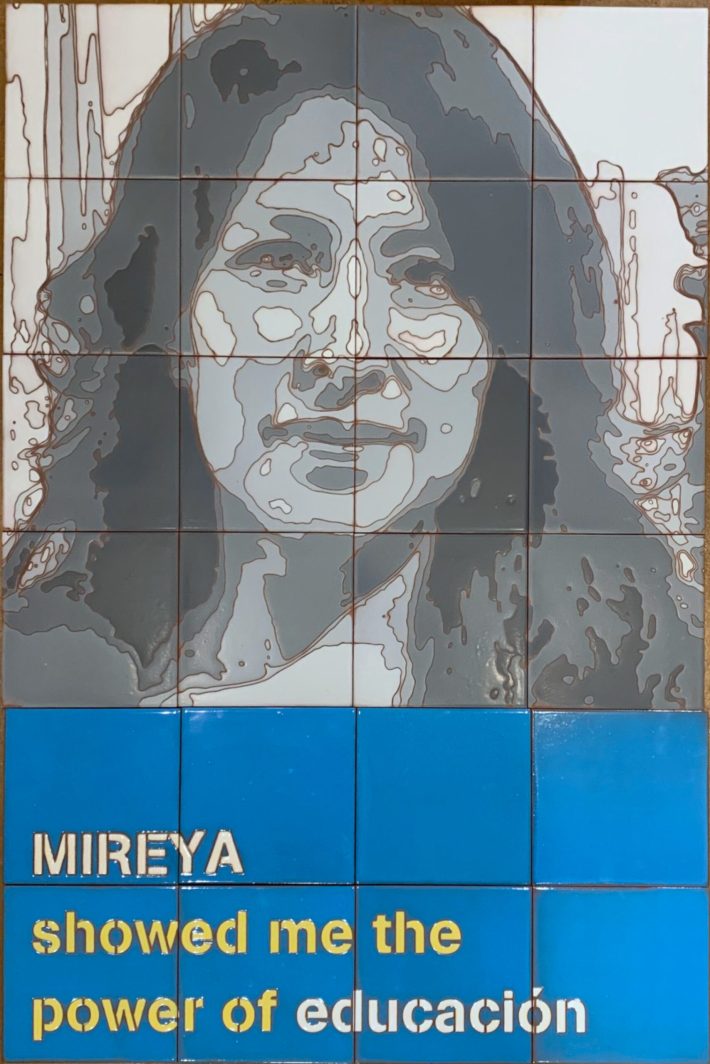
Power and Control Systems
Throughout the Gold Line extension route, miles of catenary wires are being affixed to their support poles, and cables are being set underground too. These are for the trains’ control and communications systems, and for the wayside signals too. These are similar to traffic signals, letting train drivers know when it is safe to proceed through an intersection.
Crossings
Though all of the grade crossings themselves have been finished, construction workers will be returning to some of the crossing areas to install quad gates and do additional roadway, sidewalk, and safety improvements. This means a few more traffic lane closures will take place throughout the year, with partial access remaining. Per the Construction Authority the following closures remain:
Glendora on Route 66 between Hunters Trail and Compromise Line Rd. (click here for notice) and at the Lone Hill Ave. crossing (click here for notice); in San Dimas at the San Dimas Ave. crossing (click here for notice); and in Pomona at the Garey Ave. crossing (click here for notice - available in Spanish).
Pomona to Montclair
Funding for the next 3.2 miles of the project is still pending. The next extension would be the last L.A. County segment, taking the line just into Montclair in San Bernardino County.
At the end of 2023, Metro put in a funding application to the California State Transportation Agency (CalSTA), which is administering $4 billion from S.B. 125 for transit capital projects in California. Los Angeles County’s allocation is $1 billion. An announcement from CalSTA is expected in April.
Once funding is secured, the Foothill Gold Line Construction Authority would commence a 15-month process to hire a design-build team for the Pomona-to-Montclair segment. Once that design-build contract is awarded, the segment would take an estimated to take five years to build.
Streetsblog’s San Gabriel Valley coverage is supported by Foothill Transit, offering car-free travel throughout the San Gabriel Valley with connections to the Gold Line Stations across the Foothills and Commuter Express lines traveling into the heart of downtown L.A. To plan your trip, visit Foothill Transit. “Foothill Transit. Going Good Places.”Sign-up for our SGV Connect Newsletter, coming to your inbox on Fridays!







